Geumak-ri village, an interior village in the mid-mountain “jungsangan” region, was established around 1550 by two clans from the mainland, the Kang family and the Hong family. Other families later settled here including the Yang, Park, Kim, Lee and Song clans. Despite this 400-year history, many of the settlements were razed, never to recover, as part of the government’s 4·3 counterinsurgency operations. Geumak-ri lost an estimated 300 homes with 152 residents massacred or missing. Many settlements never recovered including Utdongne and Donggareum.

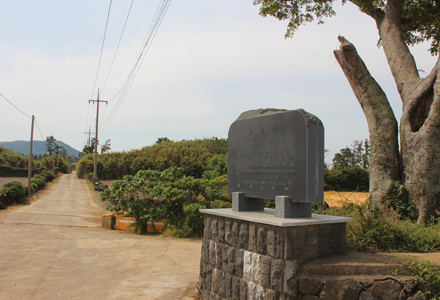
Utdongne District
Utdongne District used to boast of a 400-year history. Before Jeju 4·3, it was populated by 141 residents of 38 households surnamed Kang, Kim, Park, Yi, Song and Hong who lived by farming and raising cattle and horses here. With the eviction order issued on Nov. 21, 1948, the district was burnt down and all villagers left the community. In the process, eight innocent civilians died. Even after the restoration of districts was ordered for Geumak Village, Utdongne District was left abandoned. Only a hackberry tree (where villagers used to discuss community events and children used to play around), Weoldae (a commemorative stone altar) and a completely crushed Molbangae (a horse-driven mill) remain from before the tragedy.
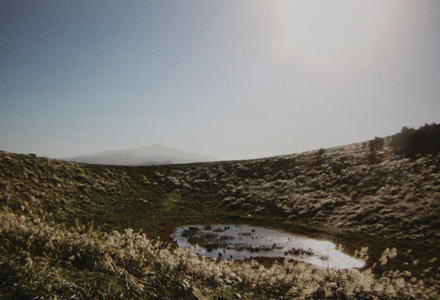
Geumoreum Volcanic Cone
Geumoreum, 427.5 meters above sea level, is located at the center of Geumak Village. The outer circumference of the crater is 1,200 meters. It used to have many names (Geummurak, Geomunoreum, Geumak, etc.), but is now called Geumoreum.

Cave Fortifications
Historically, Geum Oreum was an important site as it held a view of the entire western part of Jeju. That is why many cave fortifications were built here by the Japanese. During Jeju 4·3, nearby residents used the site as a watchtower. When police were seen approaching the village, residents would wave a red flag, and a white flag when the officers left. All but two of the cave fortifications have been restored thanks to restoration work. The site was also one of the filming locations for the award-winning film “Jiseul.”
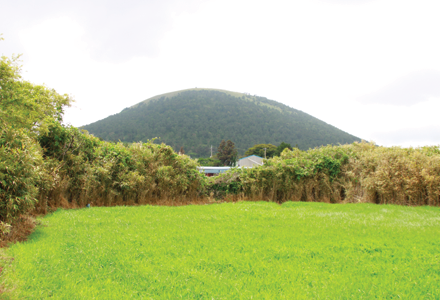
Donggareum District
Donggareum (meaning an “eastern district”) once stretched to the southern stream of Gaksaengi, housing some 50 households before Jeju 4.3. But following the eviction order by the military, all of its villagers became displaced, never to return. Now, only bamboo flourishes on the district’s former site.
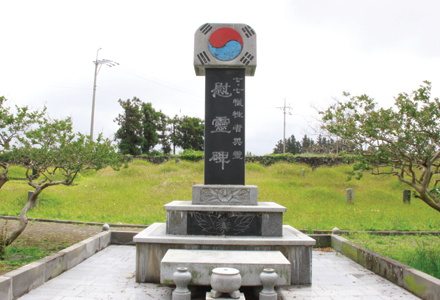
Manbaengdui Cemetery
The victims buried in the Manbaengdui Cemetery were civilians killed on Aug. 20, 1950, in the former Japanese ammo dumps of Seodaloreum Volcanic Cone near Mt. Songak (the current Baekjoilson Collective Cemetery). The bereaved families had to remain silent for six years until March 1956 when they were allowed to move the remains to the current cemetery.
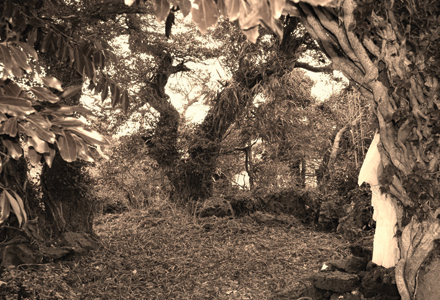
Cheonyeodang (Amidang) Shamanistic Shrine
Cheonyeodang is a shamanistic shrine honoring the folk myth of a virgin goddess (the youngest daughter/fourth of the seven children of Hareubangdang and Halmangdang). During Jeju 4·3, an official of the armed guerilla forces hid in the shrine but was arrested by the police, and was beheaded in the field across from the shrine with his own large knife that he had been carrying. The police abandoned his body in the field and hung his head from a flagpole in the yard of Gwandeokjeong, the pavilion in front of the former government office in Jeju City.